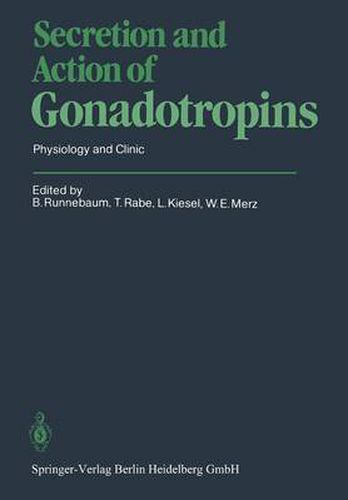Readings Newsletter
Become a Readings Member to make your shopping experience even easier.
Sign in or sign up for free!
You’re not far away from qualifying for FREE standard shipping within Australia
You’ve qualified for FREE standard shipping within Australia
The cart is loading…






This title is printed to order. This book may have been self-published. If so, we cannot guarantee the quality of the content. In the main most books will have gone through the editing process however some may not. We therefore suggest that you be aware of this before ordering this book. If in doubt check either the author or publisher’s details as we are unable to accept any returns unless they are faulty. Please contact us if you have any questions.
In 1920, Hirose demonstrated the luteinising effect of placental tissue and one year later, Evans and Long described luteinised ovaries in rats treated with hypophysial extracts. In 1926, Zondek and Aschheim as well as Smith, independently of each other, showed that a gonad-stimulating hormone was secreted by the adenohypophysis. In 1927, Aschheim and Zondek found their Prolan in human pregnancy urine and the first reliable pregnancy test was available. In the following years it could be demonstrated that the gonadotropic hormones from pituitary and from pregnancy urin were not of identical structure. During the years 1931 - 1933 Fevold and coworkers prepared follicle stimulating hormone from sheep pituitaries which were free of other hormone activities. Already in 1934, Collip found antihormones in animals treated with proteinhormones from animals of another species. It could be shown that they were antibodies against these hormones and this was the future basis for the immunological era starting in 1960. The quantitative determination of gonadotropins has been performed over several decades by difficult bioassays and since 1960 immunological and later radioimmunological assays became available. Since that time a new field was opened for the studies of gonadotropins. During this time, highly purified preparations of gonadotropins were available for research and clinical treatment. I recall the first successful attempt of inducing follicle growth and ovulation by Gemzell and coworkers 1958 as well as by Lunenfeld and Bettendorf at about the same time.
$9.00 standard shipping within Australia
FREE standard shipping within Australia for orders over $100.00
Express & International shipping calculated at checkout
This title is printed to order. This book may have been self-published. If so, we cannot guarantee the quality of the content. In the main most books will have gone through the editing process however some may not. We therefore suggest that you be aware of this before ordering this book. If in doubt check either the author or publisher’s details as we are unable to accept any returns unless they are faulty. Please contact us if you have any questions.
In 1920, Hirose demonstrated the luteinising effect of placental tissue and one year later, Evans and Long described luteinised ovaries in rats treated with hypophysial extracts. In 1926, Zondek and Aschheim as well as Smith, independently of each other, showed that a gonad-stimulating hormone was secreted by the adenohypophysis. In 1927, Aschheim and Zondek found their Prolan in human pregnancy urine and the first reliable pregnancy test was available. In the following years it could be demonstrated that the gonadotropic hormones from pituitary and from pregnancy urin were not of identical structure. During the years 1931 - 1933 Fevold and coworkers prepared follicle stimulating hormone from sheep pituitaries which were free of other hormone activities. Already in 1934, Collip found antihormones in animals treated with proteinhormones from animals of another species. It could be shown that they were antibodies against these hormones and this was the future basis for the immunological era starting in 1960. The quantitative determination of gonadotropins has been performed over several decades by difficult bioassays and since 1960 immunological and later radioimmunological assays became available. Since that time a new field was opened for the studies of gonadotropins. During this time, highly purified preparations of gonadotropins were available for research and clinical treatment. I recall the first successful attempt of inducing follicle growth and ovulation by Gemzell and coworkers 1958 as well as by Lunenfeld and Bettendorf at about the same time.